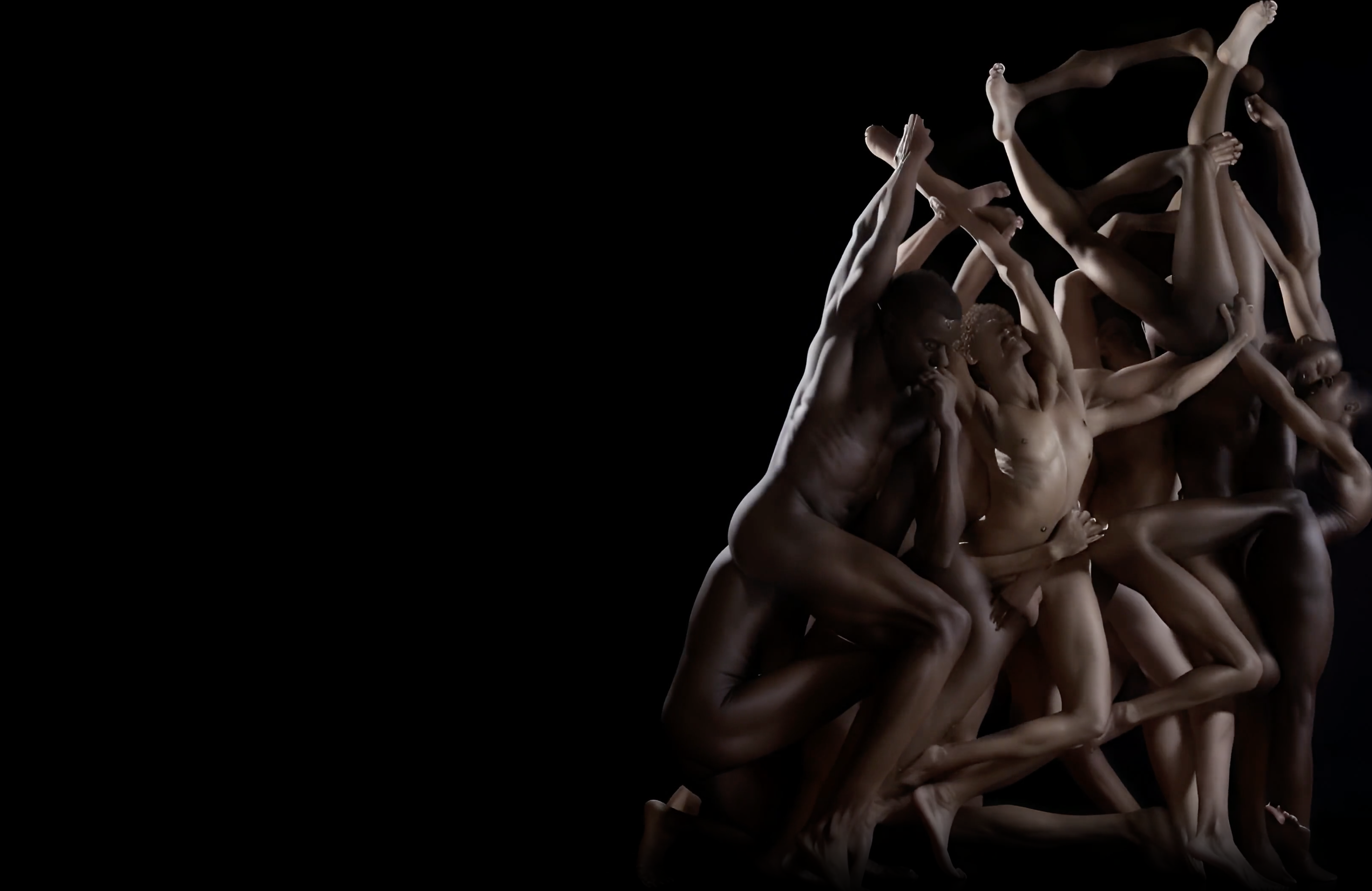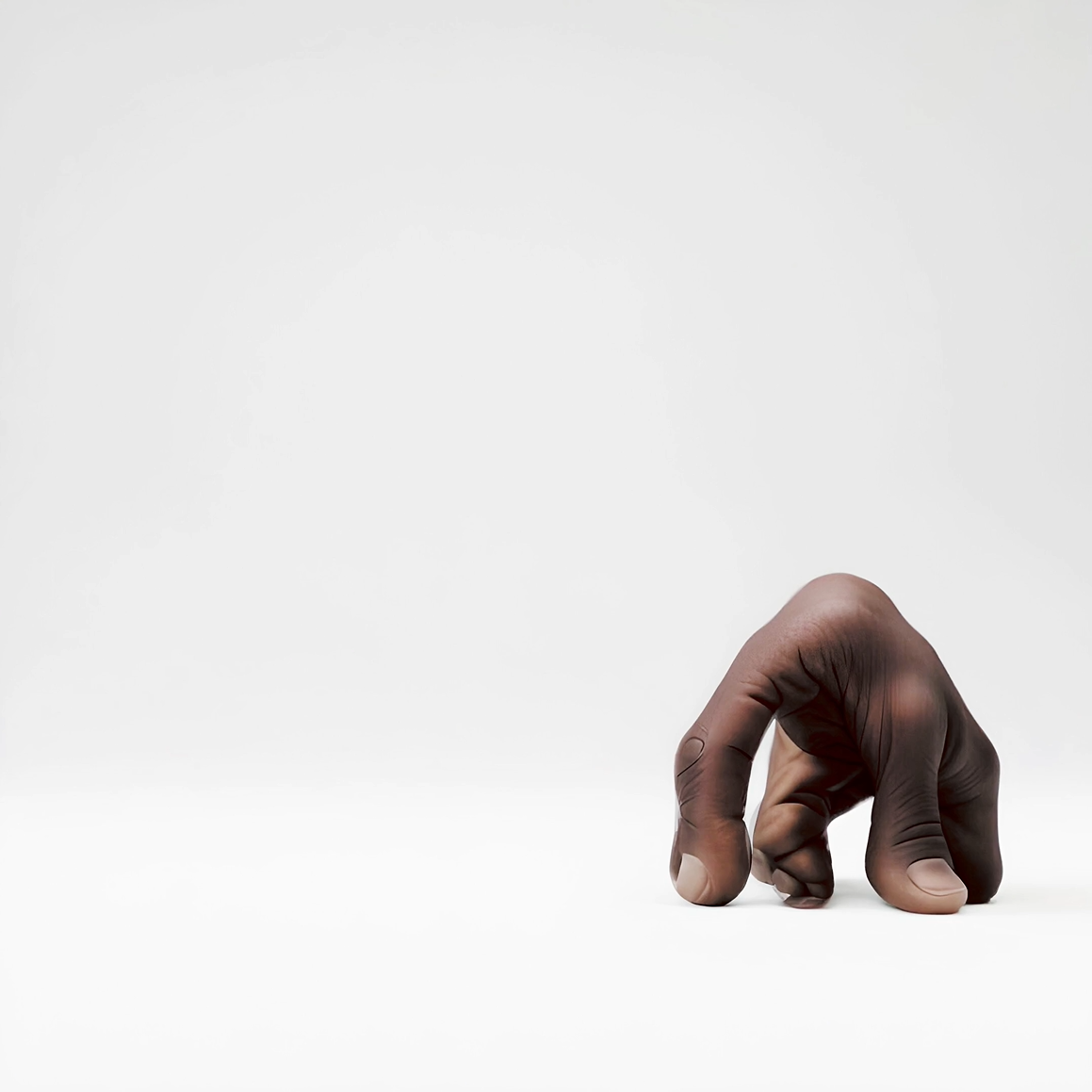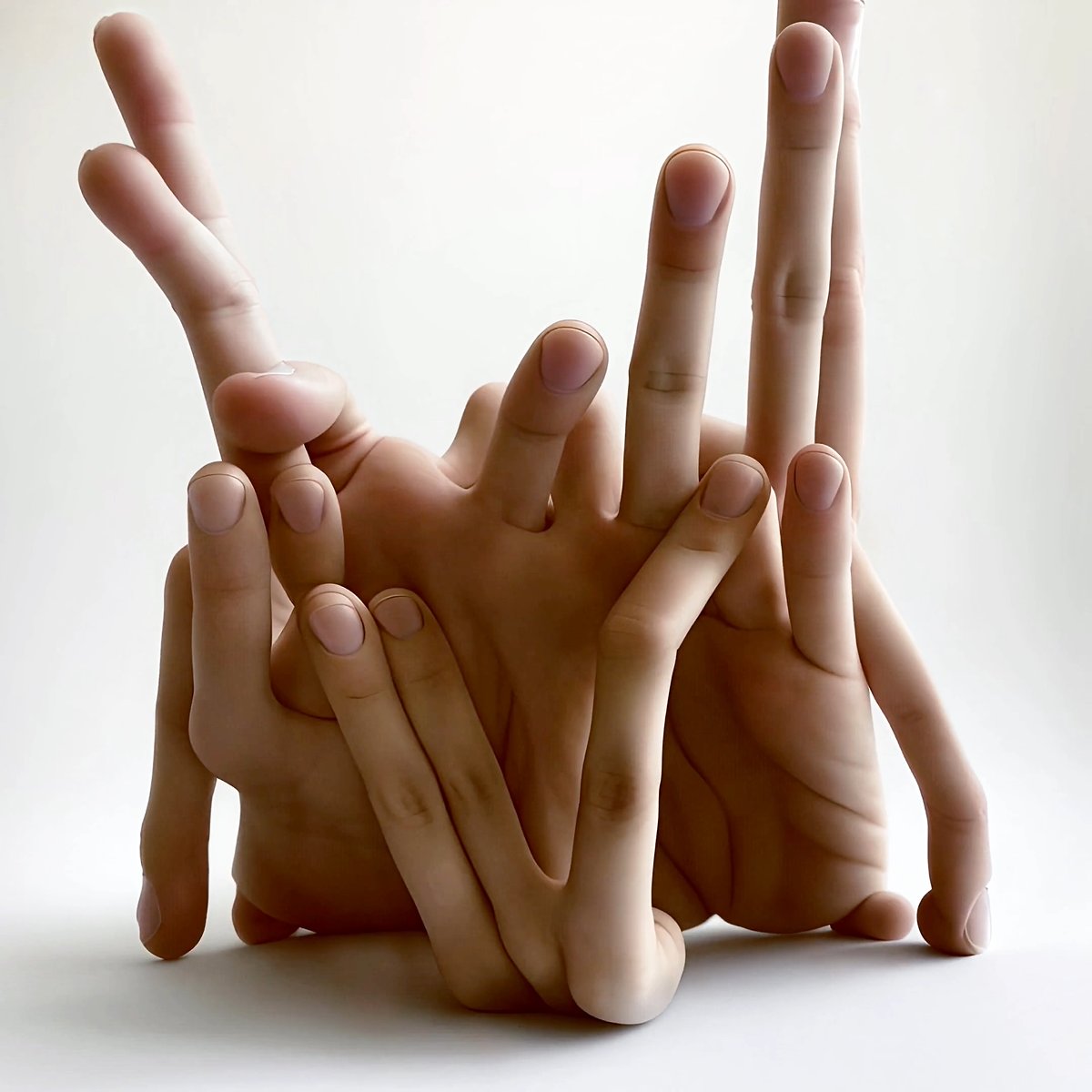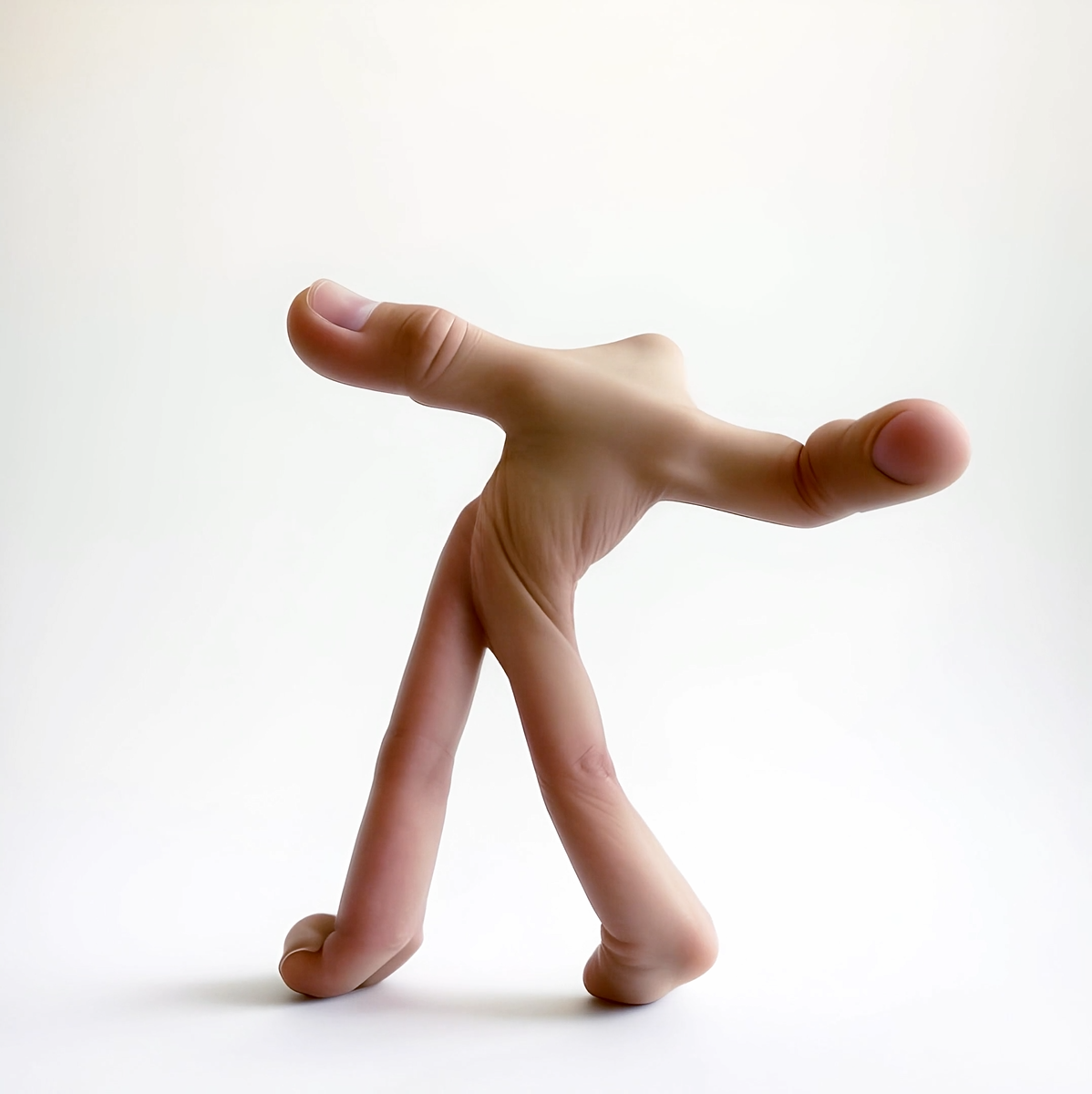In Conversations

I looked for a kind of unnatural expression that would match the strange, unnatural character of the creative process involving AI itself.
Dr Formalyst
Plutonium F. speaks to Irina Angles & Dr Formalyst
Plutonium Fitzgerald: Can you tell us about your background and how you got started in creating art?
DR FORMALYST: I’ve been working as an architect, designer, coder, and design professor for 25 years. During my practice, I became increasingly more interested in the psychology of aesthetics: why are our brains wired to find something beautiful or at least aesthetically intriguing? This led me to create an alternate persona, Dr. Formalyst, where I could freely experiment with raw visual aesthetics without being bound to a typical design program and clients' requirements. Creating a separate persona helped me adopt the "beginner's mind" and turn my typical designer's creative process on its head. My primary means of artistic expression is CGI video, featuring mainly procedural (code-made) geometry.
ANGLES: My journey started when I was 4 years old with rhythmic gymnastics. I did it for 12 years, but I felt it was about more than the sport itself. I tried to find other ways to express my creativity, and that's how I got into dancing. I started my dance journey quite late compared to other dancers. I was 22 and working as an economist. After a few years, I changed my profession to become a dance teacher, dedicating myself to dancing.
Along my dance path, I have won prizes at various battles and competitions, been a participant and judge in different festivals worldwide, performed on different stages and exhibitions ("BAUHAUS-100", MoCA), taught others through a "Geometry in our bodies" course, been invited as a speaker at TEDx, and collaborated with various brands such as Harper's Bazaar and Pandora Jewelry. The next significant step in my artistic path was in 2019 when I started connecting dancing with digital art. Collaborations with other artists with different mediums brought an absolutely new direction to my artistic vision.
PLUTONIUM F.: What got you interested in creating art with AI tools? How has AI evolved your artistic process?
DR FORMALYST: I am obsessed with tools for creative expression because I believe that the tools we use greatly affect the way we think and behave. In the past, I developed my own tools (for example, I created tools for 3D sketching in VR and AR) to shorten the gap between "the brain and the hand," between the idea and the execution. The recent quantum leaps in generative AI definitely caught my attention, and I adopted AI primarily to see how it would affect my thinking. Initially, I thought AI would provide some shortcuts in my process, but it turned out to be the opposite: my work has become much slower and more elaborate since incorporating AI. I love the generative nature of AI and the surprises it brings, and I often use it to create moodboards and sketches. However, in the final pieces, I prefer to take complete creative control over the AI. I achieve this through an elaborate process that involves staging the scenes and animations in 3D to control the AI's output.
ANGLES: I'd like to call my connection with AI art "The Beauty of Creativity Between Humans & Machines." Since I created my first artwork with AI artist Roope Rainisto in 2021, I fell in love with this new tool. It highlights hidden meanings and brings a new perspective to dance. I see so many possibilities in this connection. I love working on the quality and textures in movement and thinking about how AI can interpret my concepts.

We live in a digital epoch. We can't imagine our lives without a laptop, smartphone, or social network…modern art can't exist without reflecting life processes.
Irina Angles
PLUTONIUM F.: What inspires you as an artist?
DR FORMALYST: I get inspired by big cities and all sorts of strange human artifacts and fringe human behavior. When it comes to art, I mostly draw my inspiration from cinema, music, and abstract painting.
ANGLES: My inspiration comes from life routines, colors, forms around me, human movements, postures, reactions, natural processes, and big cities.
PLUTONIUM F.: You are a part of a group show titled "Post Photographic Perspectives II — Acceptable Realities." Can you discuss how your work fits into this collection?
DR FORMALYST: I think that Fellowship does a great job with the PPP series to establish AI as a valid art medium and change the preconceptions of AI as a tool that will replace artists and creativity. That very much aligns with my own personal curiosity about what kind of AI-assisted art, what kind of creative output, the general public could accept as artwork on its own, rather than using AI as a shortcut. In that aspect, I believe that my extremely laborious workflow results in visuals that are different from the typical AI output we see daily, and can help contribute to the Fellowship's mission of legitimizing AI art.

PLUTONIUM F.: Tell us more about the project. How did you come up with the name and your creative process for this project?
DR FORMALYST: I think that Fellowship does a great job with the PPP series to establish AI as a valid art medium and change the preconceptions of AI as a tool that will replace artists and creativity. That very much aligns with my own personal curiosity about what kind of AI-assisted art, what kind of creative output, the general public could accept as artwork on its own, rather than using AI as a shortcut. In that aspect, I believe that my extremely laborious workflow results in visuals that are different from the typical AI output we see daily, and can help contribute to the Fellowship's mission of legitimizing AI art.
Specifically for "Almost Human," I looked for a kind of unnatural expression that would match the strange, unnatural character of the creative process involving AI itself. A very important part of that is that I want to pay more attention to FORM (how things are represented) rather than CONTENT (what I represent). Nowadays, a huge part of AI-assisted output is focused on content, usually taking elements from popular culture and using AI to turn them on their head. While this is very entertaining, I don't think it really does anything to change the general public's perception that AI cannot be art.
I find that very similar to the first decades of photography when the medium, back in the 19th century, was seen merely as a means of documentation, reproduction of reality. It was not until the early 20th century when photographers started working with FORM itself rather than content that photography started being accepted as an art medium in itself.
By adopting a similar approach to AI that those photographers did a hundred years ago, I hope to contribute to this conversation of what AI art could be. And by going against the popular preconception of what AI art looks like (supercharged maximalism) and by trying to achieve minimalist AI aesthetics very much focused on the form, I pay homage to those early 20th century photographers.
PLUTONIUM F.: What are your thoughts on the intersection of photography and AI technology??
DR FORMALYST: As I mentioned above, I think we are still in the very early stages, and it's still not clear what the true potential of AI technology for photography and visual arts in general could be. It is obviously a very useful technical tool, but we are only just starting to see the shapes of what kind of new forms of visuals it can bring.

PLUTONIUM F.: Anything you would like to share with people skeptical about AI tools for creativity?
DR FORMALYST: With every piece I post, I like to include a quick behind-the-scenes video that documents the creative process and the workflow, so people can see that there is much, much more to it than just writing a few prompts.
ANGLES: We live in a digital epoch. We can't imagine our lives without a laptop, smartphone, or social network. Every day, we use different apps that help us organize daily tasks. In my opinion, modern art can't exist without reflecting life processes. Just as a few centuries ago, light was an innovative instrument for theater and dance forms, AI art is a perfect instrument nowadays. It doesn't exclude dancing; it enriches it. Dancing remains physical, but with AI art, we have more instruments to express it.
PLUTONIUM F.: Thank you so much for taking the time to speak with us. What is the best way for people to follow you and learn more about you and your work?
DR FORMALYST: So far, I've been most active on Instagram (@dr_formalyst) and less so on Twitter (@dr_formalyst). Since neither Instagram nor Twitter (nor any other social media, really) is suitable for having a good conversation about art, I have a few ideas in the back of my head about creating some other kind of online place where artists could meet and discuss art (rather than just talking about the things they had for breakfast).
ANGLES: I'm trying to be active on both Instagram and Twitter. Also, there is my website with more information about me as an artist.